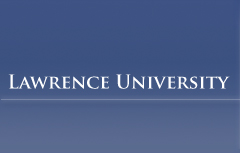Publication Date
5-28-2013
Abstract
For the third consecutive year, a Lawrence University student has been recognized with the Best Student Poster Award at the annual Institute on Lake Superior Geology (ILSG) conference.
Brynley Nadziejka, a junior from Kentwood, Mich., was recognized for her research at the Institute’s recent annual meeting held in Houghton, Mich. Nadziejka’s presentation was based on an analysis of minerals found in metamorphic rocks she collected last fall. Her study centered on what the minerals reveal about the development of the Penokee Range, a great mountain belt that existed in northern Wisconsin some 1.8 billion years ago.
“Chemical analysis of rocks from this region have been done by geologists previously, but no one had made a careful study of the sequence in which the minerals had formed, which is critical to understanding the timing of different stages of the growth of those mountains,” explained Marcia Bjornerud, Lawrence professor of geology and Nadziejka’s academic advisor. “Bryn’s research shows that some previously proposed ideas about the formation of the Penokee Mountains are incorrect.”
Nadziejka was among more than two dozen student presenters from around the country at the annual conference. She received $100 as part of her award.
“Attending the Institute’s annual meeting allows our students to interact with a wide range geologists, from university professors to mining company executives to members of state, provincial and national geological surveys and exposes them to new research on the rocks of the southern Canadian Shield,” said Bjornerud. “Through the meeting and associated field trips, our students learn about job and graduate school opportunities and see spectacular outcrops of very ancient rocks.”
The Institute on Lake Superior Geology is a non-profit professional society that provides a forum for the exchange of geological ideas and scientific data and promoting better understanding of the geology of the Lake Superior region, whose rocks record more than 2.5 billion years of geologic time, more than half of Earth’s entire history. Its annual meeting draws geologists from the United States, Canada and throughout the world.
Department
Geology
Recommended Citation
Lawrence University, "Brynley Nadziejka Honored by Institute on Lake Superior Geology" (2013). Press Releases. 58.
https://lux.lawrence.edu/pressreleases/58
